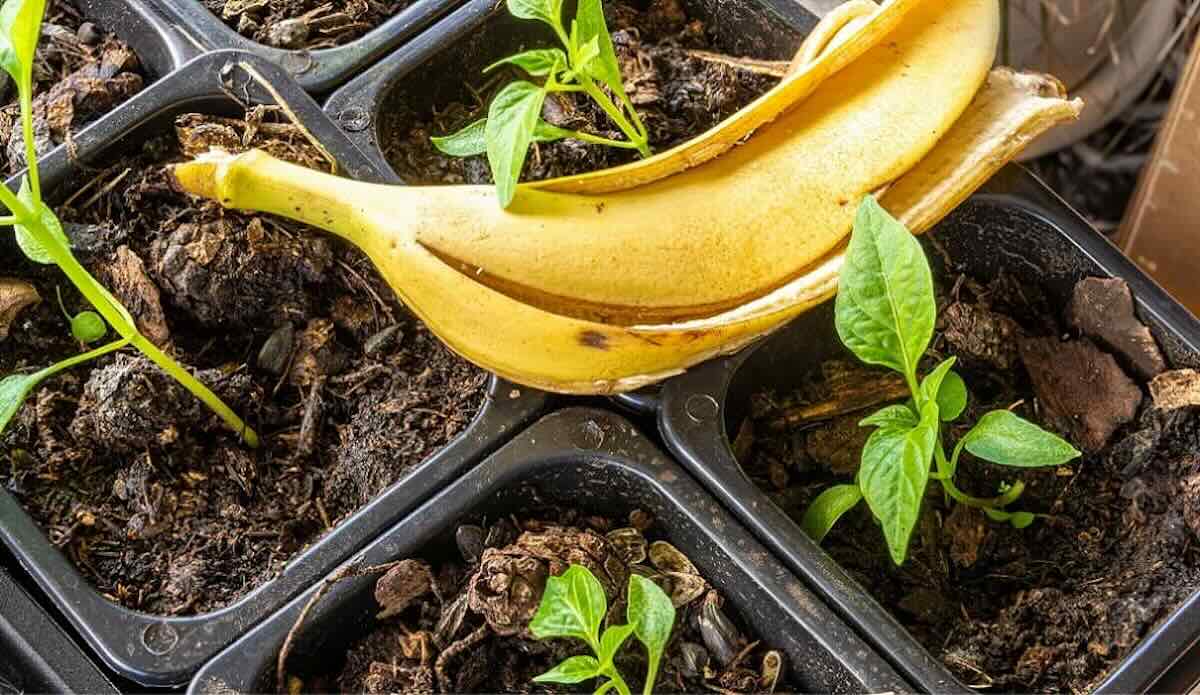Placing banana skins straight into garden earth gives vegetation a continuous flow of essential elements, removing dependence on artificial fertilizers. The potassium, phosphorus and calcium discharged through breakdown processes encourage blooming, underground development and robust cellular structure, while additional organic content assists ground retention of moisture and supports helpful bacterial communities. The technique remains straightforward: slice the skins, position modest quantities around plant bases and replace them throughout cultivation periods. Applied with restraint, banana skins offer a convenient, minimal-waste enhancement for flowering bushes, edible crops, orchard trees and selected indoor specimens.
Why fruit peels feed soil so effectively
When biodegradable remnants decompose beneath ground level, they enhance surface earth with compost material and networks of microscopic organisms. This active substrate strengthens composition, making garden areas simpler to cultivate while excelling at retaining water where root systems require it. Since essential elements emerge slowly, vegetation obtains nourishment continuously instead of experiencing temporary spikes.
What decomposition brings to soil
As peels decompose, microbes consume them and leave behind compounds that bind soil particles into stable crumbs. Those crumbs improve airflow, reduce surface crusting after rain, and increase water-holding capacity. In short, decomposition upgrades the soil’s physical “home” so roots can explore more easily and access resources more consistently.
Key nutrients at work
Banana skins deliver potassium for general vitality and blossom excellence, phosphorus for underground development and flower creation, plus calcium for durable cellular structures. Minor components including magnesium and sulfur additionally serve supporting functions in chlorophyll synthesis and enzymatic processes. The outcome represents a harmonious enhancement that promotes robust expansion and improved blooming performance.
How to bury bananas without harming roots
Begin with recently obtained or dehydrated skins and slice them into tiny fragments to accelerate decomposition. For earthen plots, position the segments at moderate distance from the trunk—close to the perimeter boundary of foliage—allowing root systems to locate them without congesting emerging development. Inter them 1–2 inches below surface and conceal thoroughly to prevent creatures from detecting. A practical guideline is one to two peels per medium plant; larger shrubs and roses can handle slightly more spread across several shallow holes. Time your additions at planting or during regular feeding. Through the growing season, repeating every few weeks keeps the nutrient trickle going without overwhelming the soil.
Common mistakes to avoid
Avoid stacking skins above ground level, where they might draw wildlife and become dehydrated. Prevent digging massive channels that sever through thick feeding roots; numerous shallow openings prove kinder than single deep excavations. Bypass saturated planters lacking adequate drainage systems, and consistently irrigate gently following burial to compact earth and stimulate bacterial processes.
Plants that respond best
Roses appreciate the potassium lift for sustained flowering and sturdy canes. Many bedding annuals—marigolds and zinnias among them—also show reliable performance when the root zone includes modest organic inputs. In the vegetable patch, tomatoes benefit from improved soil tilth and the nutrient blend that supports blossoms and fruit set; peppers respond similarly. Orchard trees and fruit shrubs utilize identical components to encourage bud development and general wellness, particularly when earth conditions require mild improvement. Inside homes, peace lilies and snake plants can tolerate limited quantities of diced skin blended into container medium, assuming water flow remains adequate and portions stay conservative. Consider skins as enhancement material, not substitution for comprehensive nutrition and proper cultivation practices.
Quick checklist for first-timers
- Chop peels into small pieces to speed decomposition.
- Bury 1–2 inches deep, a little away from stems.
- Limit to one or two peels per plant at a time.
- Repeat modestly during the growing season, then observe and adjust.
What to expect over time and practical limits
Because peels decompose gradually, improvements show up as steadier growth, better leaf color, and a soil surface that stays crumbly after watering. This is not an instant fix; it is a cumulative habit that pairs well with mulch and routine watering. Direct burial reduces kitchen waste while keeping nutrients where roots can use them. Still, moderation matters: too many peels in one spot can create a soggy pocket that excludes air. Spreading small amounts around the drip line prevents that issue. If you already compost, you can continue that routine and still bury occasional chopped peels near heavy feeders for a local boost. As the peels of bananas break down, expect fewer dry patches, improved microbial life, and a bed that is easier to keep evenly moist.
A simple habit that turns scraps into steady nutrition
Keep a small container on the counter, chop peels as you go, and feed beds in quick, shallow holes. This light touch adds nutrients, builds soil structure, and fits easily into weekly maintenance. Start with roses or tomatoes, note the response, then extend the practice to fruiting shrubs or a favorite houseplant. Small, steady inputs make a visible difference by season’s end.
What to do now
Pick two or three plants that bloom or fruit heavily and give them a first trial. Chop one or two peels, bury them shallowly around the drip line, water in, and mark the date. Repeat sparingly every few weeks during active growth. Observe foliage, flowering and soil feel, and adjust the amount as your beds respond.
